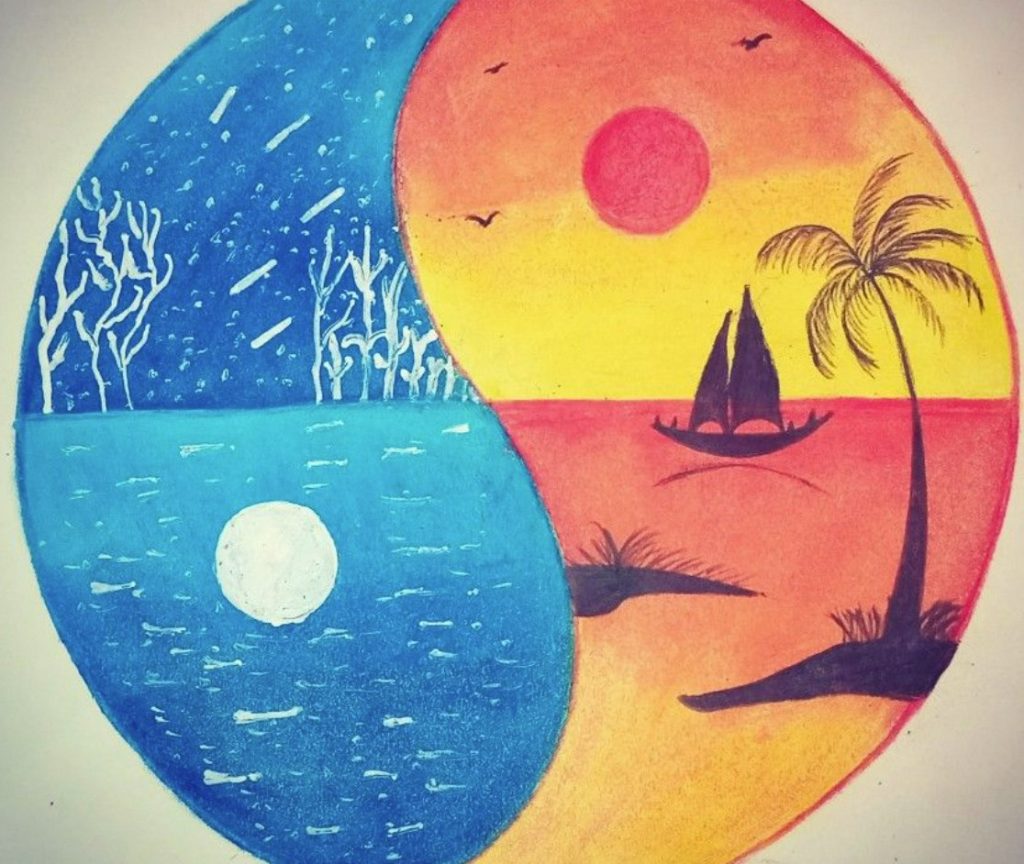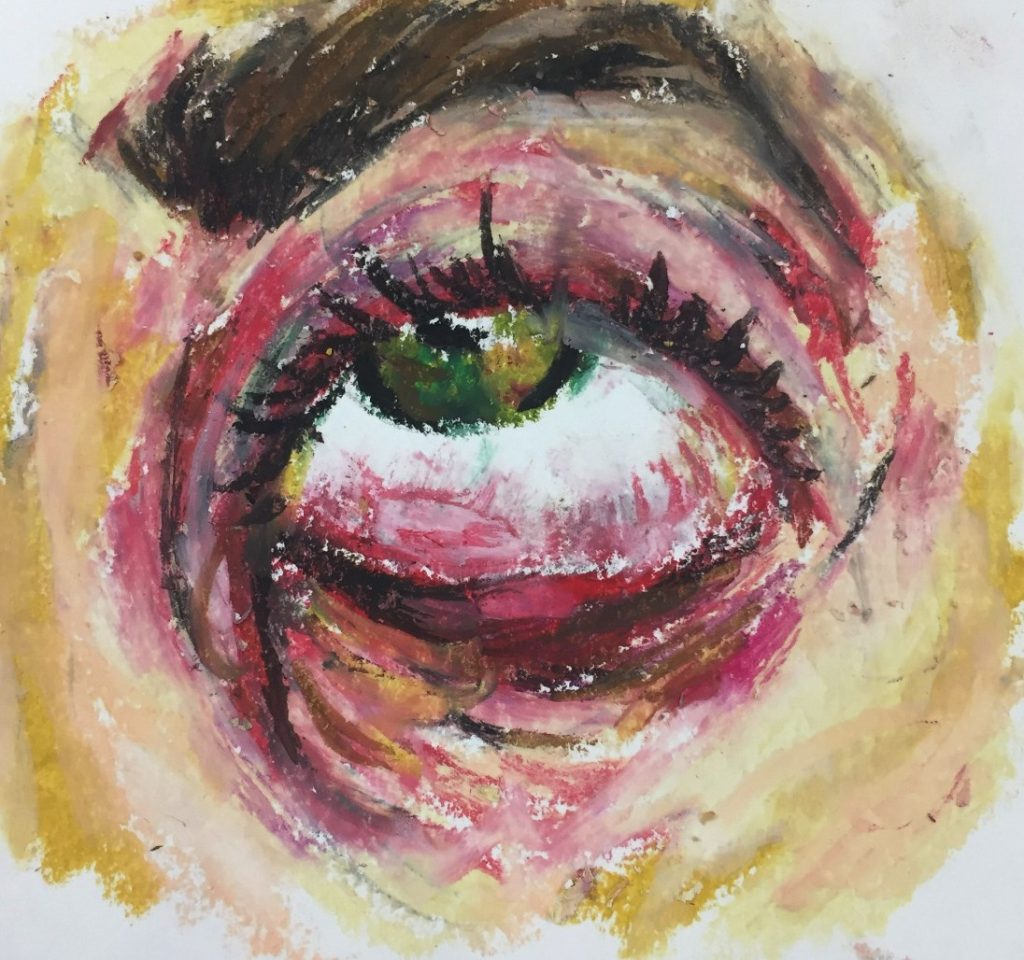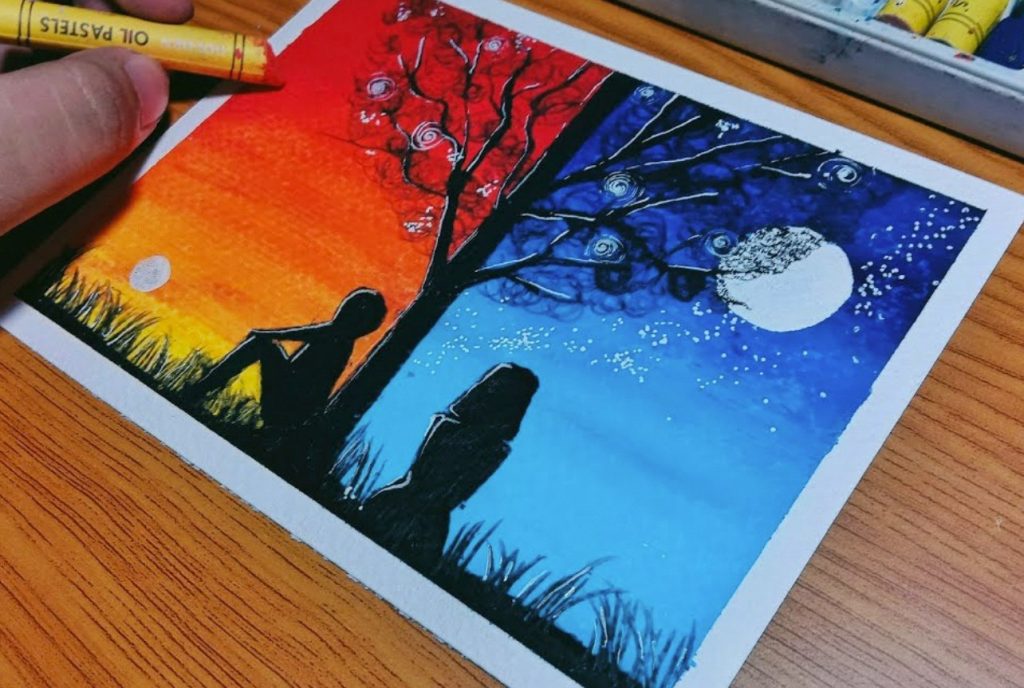Oil pastels, with their vibrant colors and smooth texture, offer an exciting medium for artistic expression. They bridge the gap between drawing and painting, allowing for both bold lines and blended backgrounds. Whether you’re a seasoned artist or just starting your creative journey, oil pastels can be a fantastic tool to unleash your inner artist.
This guide will equip you with the knowledge and techniques to create stunning artwork using oil pastels. We’ll delve into the essential aspects of using this medium, exploring basic techniques and inspiring creative exploration.

Part 1: Getting Started with Oil Pastels
The Right Supplies:
There are two main types of oil pastels: hard and soft. Hard pastels are ideal for drawing and creating crisp lines, while soft pastels are better for blending and achieving a painterly effect. For beginners, a starter set with a range of both hard and soft pastels is a good option. Additionally, you’ll need suitable paper. Look for heavyweight, textured paper specifically designed for oil pastels. It can handle the richness of the colors without smudging.
Basic Techniques:
Mastering a few basic techniques will unlock the potential of oil pastels. Layering is a fundamental approach. Apply light strokes of color first and gradually build up the intensity by layering darker shades on top. Blending allows for smooth transitions between colors. You can achieve this by smudging the pastels directly with your fingers or using tools like blending stumps or tortillions.
Part 2: Exploring Techniques and Expression
Creative Mark-Making:

When working with oil pastels, it’s important to embrace experimentation and explore various application techniques to expand your artistic repertoire. Make use of the different surfaces of the pastels – the sides for broad, sweeping strokes, and the tips for finer, more detailed work. Experiment with scraping the surface of the pastels using tools like a toothpick or the edge of a palette knife to reveal underlying colors and create intriguing textures within your artwork. Additionally, consider incorporating oil pastels with other mediums to create a mixed-media effect. Layering oil pastels on top of mediums such as acrylic paint or ink can result in a dynamic and multidimensional artwork, offering a unique interplay of colors and textures. By pushing the boundaries of how you apply oil pastels and exploring their potential in combination with other mediums, you can unleash your creativity and produce innovative and captivating works of art that showcase your versatility and artistic vision.
Color Theory:
Understanding color theory can elevate your artwork. The basic principles involve the color wheel, primary colors (red, yellow, blue), secondary colors (green, orange, purple), and complementary colors (opposites on the color wheel). Experimenting with complementary colors can create vibrant contrasts, while using analogous colors (those next to each other on the wheel) creates a harmonious feel.
Part 3: Inspiration and Subject Matter

Finding Inspiration:
When it comes to starting a new art project, finding inspiration can sometimes be the most challenging part. However, inspiration can be discovered in numerous places. One way to find it is by immersing oneself in nature, taking walks, and observing the beauty around you. Another option is to visit museums and galleries to view the works of established artists, seeking out sources of inspiration in their masterpieces. Additionally, browsing art books and online resources can open up new possibilities and stimulate your creativity. Pay close attention to the colors, textures, and compositions that resonate with you. It can also be helpful to engage in creative prompts or exercises to ignite new ideas and overcome creative blocks. This could include experimenting with new techniques, exploring different subjects, or even collaborating with other artists. By actively seeking out inspiration, you can cultivate a wellspring of creativity and ideas, infusing your art with depth, originality, and meaning.
Choosing Your Subject:

Oil pastels offer a versatile medium that enables artists to explore a multitude of subjects and styles. There are virtually no limitations on what you can create with oil pastels, whether it’s a traditional still life, a captivating landscape, a poignant portrait, or a bold and expressive abstract composition. It’s important not to be afraid to step outside your comfort zone and experiment with new subjects and styles. The key is to choose a subject that ignites your passion and allows you to express your creativity unreservedly. Embracing a diverse range of subjects and styles not only broadens your artistic horizons but also provides an opportunity for personal growth and artistic development. By venturing into new territories and exploring different themes and techniques, you can unearth hidden talents, unlock new creative pathways, and foster a deeper connection with your art, ultimately leading to the creation of evocative and meaningful works of art that reflect your unique artistic vision.
Part 4: Practice Makes Progress
Embrace the Process:

It’s crucial to approach the creation of art as a journey rather than a destination. It’s natural to feel discouraged if your initial attempts with oil pastels don’t yield the masterpieces you envision. However, it’s important to remember that artistic skill and mastery develop through consistent practice and experimentation. Embrace the learning process and recognize that each artwork, regardless of its perceived success, contributes to your growth as an artist. As you continue to practice and explore the capabilities of oil pastels, you will become more adept and comfortable with the medium. Embracing the journey of artistic development allows you to adopt a mindset of continual learning and improvement, enabling you to overcome obstacles and challenges with a sense of optimism and determination. By fully immersing yourself in the process of experimentation and learning, you can cultivate resilience, refine your skills, and ultimately realize your creative potential with oil pastels.
Share your artwork with friends, family, or online communities. Getting feedback can be incredibly helpful in identifying areas for improvement. Take classes or workshops to learn new techniques and get inspired by other artists.
Oil pastels are a versatile and rewarding medium that allows for endless creative exploration. By following these tips and embracing the joy of experimentation, you’ll be well on your way to unleashing your creativity and creating stunning artwork with oil pastels.


